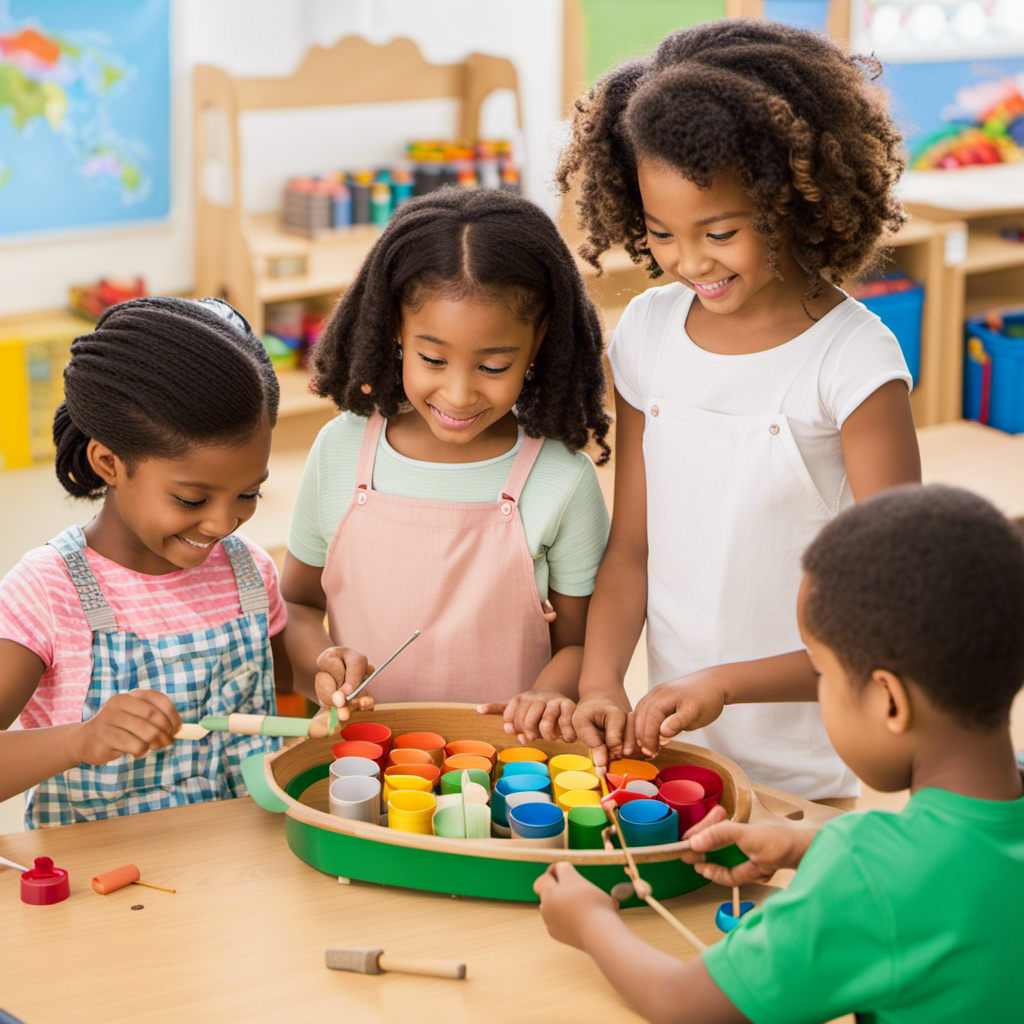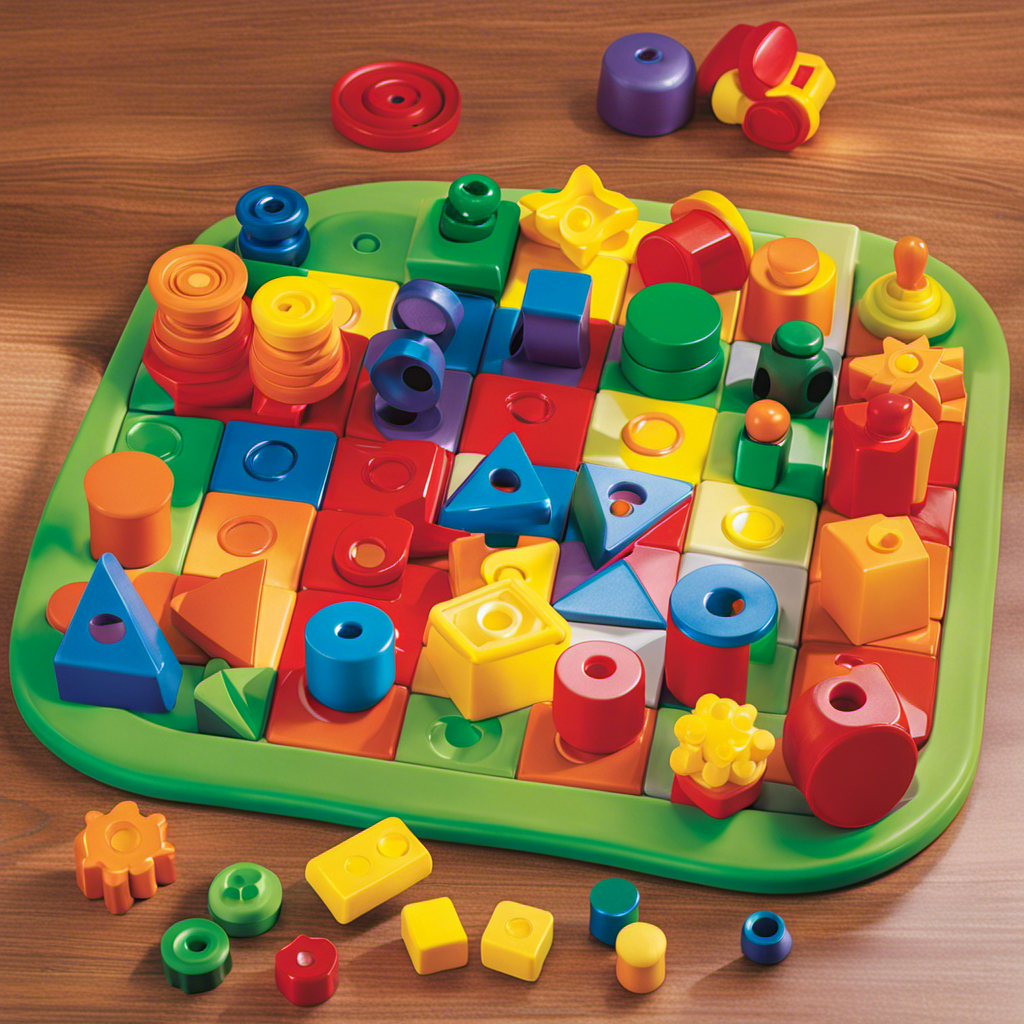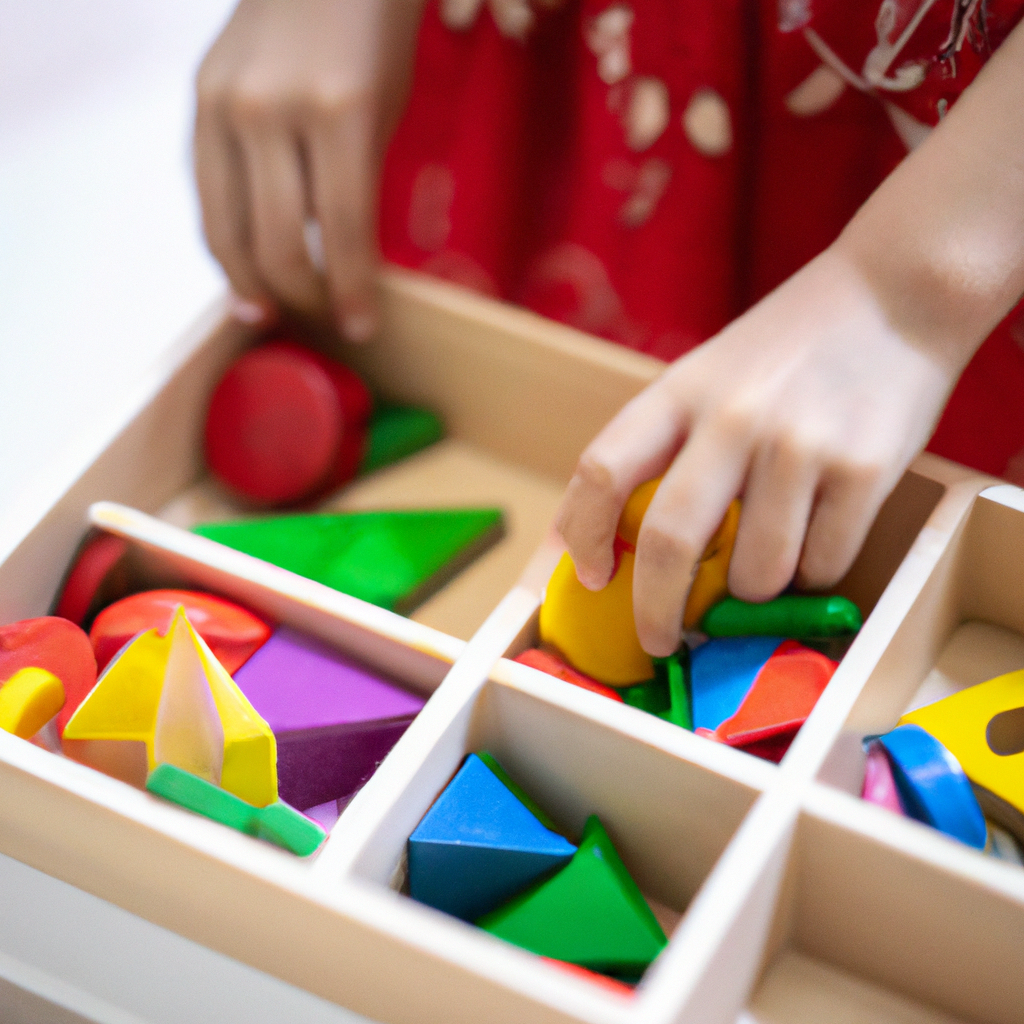When I step into a Montessori classroom, I am immediately drawn to the vibrant environment and the sense of independence that fills the room. Each child appears to be a unique seed, ready to blossom and thrive in their own special way.
The Montessori Way is a transformative approach to education, one that values and respects the individuality of each child. Through hands-on learning, practical life skills, and a nurturing environment, the Montessori method ignites a passion for independent exploration and sets the stage for a lifetime of success.
Key Takeaways
- Montessori classrooms support individual needs and interests, allowing students to choose their preferred learning areas and develop at their own pace and in their own way.
- Emphasis is placed on practical life skills, teaching children relevant skills for everyday life to foster independence, responsibility, and self-confidence.
- Learning through senses is a key aspect of the Montessori method, as materials are designed to engage the senses and provide meaningful learning experiences that enhance engagement and understanding.
- The Montessori approach also focuses on social and emotional development, encouraging collaboration, effective communication, problem-solving skills, empathy, compassion, and strong social skills.
Principle 1: Respect for the Child
I strive to create a supportive environment that respects each child’s unique strengths and learning styles.
In the Montessori classroom, we understand that every child is different and has their own way of learning. We embrace their individuality and provide a space where they can thrive.
Our goal is to support their needs and interests, allowing them to develop at their own pace and in their own way. By encouraging independence and self-confidence, we empower them to take ownership of their learning journey.
We respect their choices and provide a variety of learning areas for them to explore, such as reading, science, math, and creative areas. Movement is also encouraged, as we believe it enhances their engagement and understanding.
Principle 2: Emphasis on Practical Life Skills
In the Montessori classroom, we teach relevant skills for everyday life such as cooking, cleaning, and self-care. These practical life skills are an integral part of our curriculum and play a vital role in the development of our students. Here’s why:
-
Independence and responsibility: By learning how to cook, clean, and take care of themselves, children gain a sense of independence and responsibility. They learn how to take care of their own needs and contribute to their surroundings.
-
Self-confidence: Mastering practical life skills boosts children’s self-confidence. They feel capable and empowered, knowing that they can accomplish tasks that are essential for daily living.
-
Real-world preparation: Teaching these skills prepares children for real-world situations. They learn how to navigate their environment and become self-sufficient individuals who are ready to take on the challenges of life.
Principle 3: Learning Through Senses
By engaging students’ senses, we create a dynamic learning environment in the Montessori classroom. The Montessori method recognizes the importance of sensory experiences in learning.
Through colorful beads, textured fabrics, and musical instruments, we provide materials that stimulate the senses and enhance engagement and understanding. These materials are carefully designed to teach math, language, and science concepts in a meaningful way.
By allowing students to explore and interact with these materials, they develop a deeper understanding of the concepts being taught. This hands-on approach not only fosters a love for learning but also encourages critical thinking and problem-solving skills.
Furthermore, by engaging multiple senses, we create a rich and immersive learning experience that supports individual learning styles and promotes holistic development.
Principle 4: Social and Emotional Development
Encouraging collaboration and respect for others, I foster effective communication and problem-solving skills in the Montessori classroom.
By creating a supportive environment, I strive to develop empathy, compassion, and strong social skills in my students.
Through various activities and projects, I encourage teamwork and cooperation, allowing my students to learn from and with their peers.
I believe that by providing opportunities for collaborative play, I am helping my students develop important communication and problem-solving skills that will benefit them in their future endeavors.
In our classroom, we value each other’s ideas and opinions, and we work together to find creative solutions to challenges.
Principle 5: Hands-On Learning
I believe that hands-on learning is essential in the classroom because it allows students to actively engage with materials and concepts, fostering a deeper understanding and retention of knowledge.
When students have the opportunity to touch, manipulate, and explore objects and ideas, they become active participants in their own learning. This type of experiential learning helps to make abstract concepts more concrete and tangible.
By physically interacting with materials, students can make connections, ask questions, and test hypotheses, which leads to a more meaningful and lasting understanding.
Additionally, hands-on learning promotes problem-solving skills, critical thinking, and creativity. It allows students to learn from their mistakes and develop resilience.
Overall, hands-on learning creates an engaging and dynamic classroom environment that empowers students to take ownership of their education.
Frequently Asked Questions
How Are Montessori Classrooms Designed to Support Individual Needs and Interests?
Montessori classrooms are designed to support individual needs and interests by providing a variety of learning areas, such as reading, science, math, and creative areas.
Students are free to choose their preferred learning area, allowing them to explore their own interests.
Movement is encouraged in the classroom, recognizing that each child learns in their own way.
Montessori classrooms respect the uniqueness of each child and strive to create a supportive environment that fosters independence, self-confidence, and personalized learning experiences.
What Are Some Examples of Practical Life Skills That Are Taught in a Montessori Classroom?
In a Montessori classroom, practical life skills are taught to empower children in their everyday lives. Examples include cooking, cleaning, and self-care. These skills develop independence, responsibility, and self-confidence. By learning these skills, children are prepared for real-world situations and gain a sense of accomplishment.
The Montessori approach recognizes the importance of practical skills in fostering holistic development. It’s amazing to witness how children thrive when given the opportunity to learn and master these essential life skills.
How Do Montessori Materials Engage the Senses and Enhance Learning Experiences?
Montessori materials engage the senses and enhance learning experiences through their design and purpose. Colorful beads, textured fabrics, and musical instruments are used to stimulate the senses and make learning more engaging.
These materials are specifically crafted to teach math, language, and science concepts in a hands-on way. By involving multiple senses, children are able to have a deeper understanding and connection to the concepts being taught.
This approach creates meaningful learning experiences that are both enjoyable and effective.
In What Ways Does the Montessori Method Promote Social and Emotional Development in Children?
In the Montessori method, social and emotional development is prioritized. Children learn collaboration, respect, and effective communication through projects and activities designed for social interaction. This fosters teamwork, cooperation, and empathy.
The emphasis on social skills promotes emotional growth and understanding. The classroom environment encourages exploration, discovery, and hands-on learning, which allows children to learn from and with their peers.
This individualized approach builds confidence, a love for learning, and a sense of responsibility.
How Do Montessori Classrooms Encourage Hands-On Learning and Exploration?
Montessori classrooms encourage hands-on learning and exploration through a variety of ways. Students are given freedom to choose their preferred learning area, which is filled with interactive materials. These materials are designed to engage the senses and encourage exploration and discovery.
The classroom environment supports individual interests and needs, allowing students to learn at their own pace and in their own way. Through this approach, Montessori classrooms foster a love for learning and enhance understanding through meaningful, hands-on experiences.
Avery brings the magic of words to life at Toddler Ride On Toys. As a dedicated writer, she combines her love for writing with her fascination for child development to craft articles that resonate with our audience. With a background in journalism and a knack for storytelling, Avery’s pieces inform, engage, and inspire parents and caregivers.










